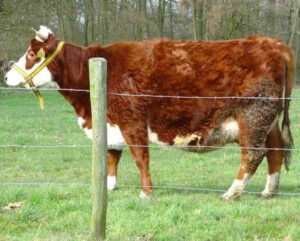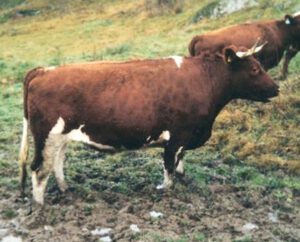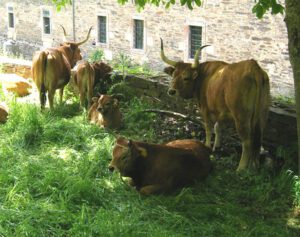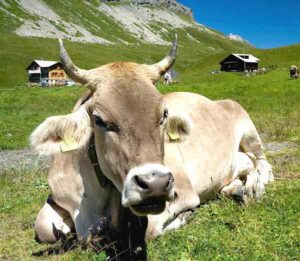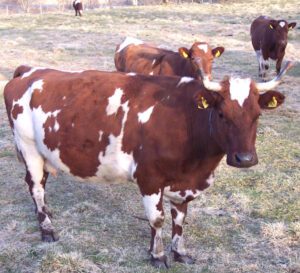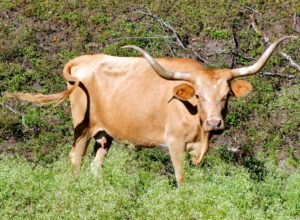Ayrshire cattle is a breed of dairy cattle which was originated from Ayrshire in southwest Scotland. It is a medium sized breed, but very good in milk production. These cattle generally have red and white markings (the red can range from a shade of orange to a dark brown). The breed is known for it’s hardiness and it’s ability to convert grass into milk efficiently. The breed’s strengths today are traits of easy calving and longevity.
The Ayrshire breed was originated in the county of Ayrshire in Scotland before 1800. It was referred to as the Dunlop, during the breed’s development. Later the Cunningham, and finally, the Ayrshire. Many cattle historians believe the Ayrshire cattle cattle breed originated in Holland. They were crossed with other breeds of cattle in 1750, which led to their distinctive brown spots.
They were recognized as a distinct breed by the Highland and Agricultural Society in 1814. Many modern dairy farmers favour this breed, because of their longevity, hardiness and easy calving. The breed was first brought to the US in 1822, primarily to Connecticut and other parts of New England (the environment was similar to their native land of Scotland).
The American Ayrshire Breed Association was founded in 1875. The Approved Ayrshire Milk programme, which licensed farms that owned Ayrshire cattle, began in the 1930s. Milk of Ayrshire cows was identified as being of higher quality compared to that of other cattle breeds. Today, the cattle are owned by farmers in many areas of America, including New York and Pennsylvania.[1]
Characteristics
The Ayrshire cattle are medium sized animals, but they are very beautiful. They are considered to be best milk producers as compared to their size. These animals are generally red and white in color. The red coloration can vary from very deep to a lighter shade. According to the U.S. Ayrshire Breeder’s Association, ‘there is no discrimination or registry restriction on color patterns for these cattle’.
The Ayrshire calves are generally dehorned to reduce injuries to other cattle and human handlers. Their horn can grow up to 12 inches in length, if they are not polled. These cattle are generally strong and adaptable to many farming methods, mainly due to the environment of their native Scottish lowland.

The Ayrshire cattle are usually able to survive despite less feed and less fertile ground, as compared to other dairy cattle breeds, such as Holstein Frisian cattle. As a medium sized breed, average live body weight of the mature cattle is around 540 kg.
Uses
The Ayrshire cattle are raised mainly as a dairy cattle breed. They are very good for milk production as compared to their size and weight.
Special Notes
The Ayrshire cattle are of very good behavior and temperament. They are most dominant, least attacked by their group-mates and least susceptible to group change.
They are known for their hardiness and their ability to convert grass into milk efficiently. The breed’s strengths today are traits of easy calving and longevity.
These cattle are very good for milk production as compared to their size. Milk production of a cow can reach 9,100 kg or greater per annum.
Milk of Ayrshire cattle is of very good quality, and good for making different milk products. However, review full breed profile of the Ayrshire cattle in the chart below.
| Breed Name | Ayrshire | |
| Other Names | Dunlop, Cunningham | |
| Breed Purpose | Milk | |
| Special Notes | Good behavior and temperament, known for their hardiness and their ability to convert grass into milk efficiently, traits of easy calving and longevity, good for milk production, milk is of very good quality | |
| Breed Size | Medium | |
| Bulls | Around 540 kg | |
| Cows | Around 540 kg | |
| Climate Tolerance | All climates | |
| Coat Color | Generally red and white | |
| Horned | Yes | |
| Milk Yield | Good | |
| Rarity | Common | |
| Country/Place of Origin | Scotland |

